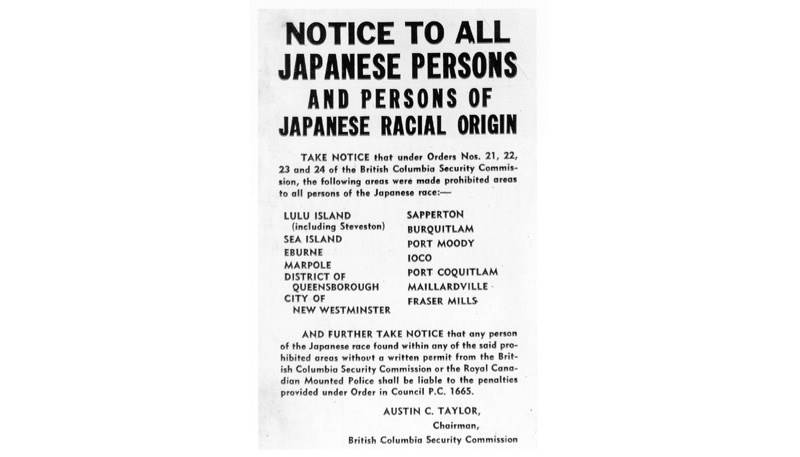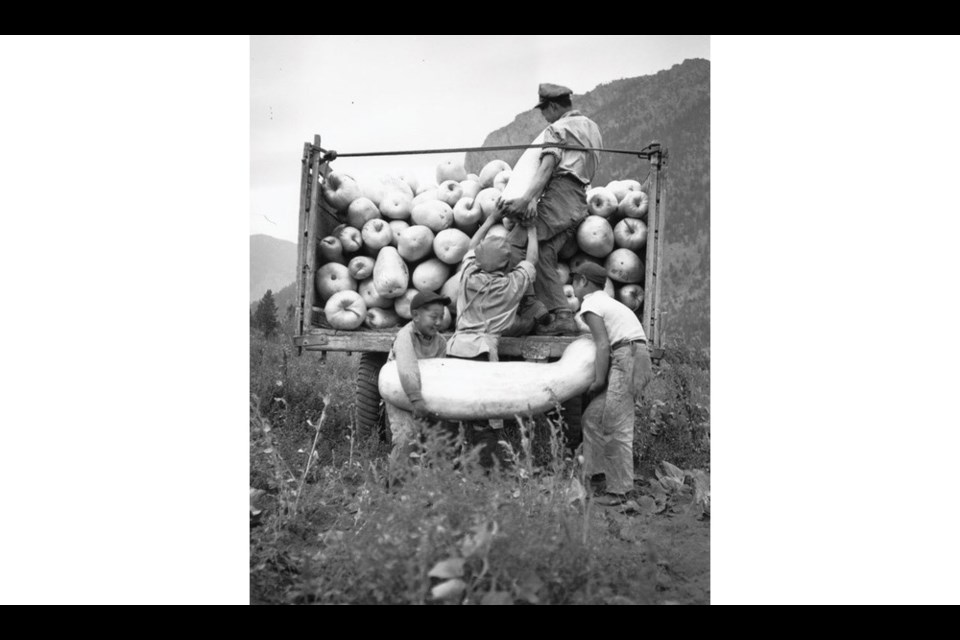“What a cruel thing war is……..to fill our hearts with hatred instead of love for our neighbours,” Robert E. Lee
When the Japanese bombed Pearl Harbor December 7, 1941, over 20,000 people of Japanese descent (the majority were Canadian) were removed from their homes and sent to self-support internment camps in the BC Interior and across Canada between 1942 and 1949.
I recently had a conversation with one of our Richmond Garden Club members, who is Japanese-Canadian.
In 1942, her family was moved from Steveston, briefly to an internment camp in Taylor Lake in the Cariboo and then to Lillooet, B.C.
Her grandparents immigrated from Japan and settled in Eburne on Sea Island. Her grandfather, a very enterprising fellow, had a general store in which he sold Japanese goods.
He also built a couple of fish packer boats and had some shares in a sawmill.
In 1942, she and her father, mother and grandparents were moved to the Taylor Lake area where the men picked apples in other communities to earn money.
Then the family was moved to the east Lillooet interment camp where they helped with local harvests and grew produce to sell locally.
Her mother’s parents were sent to Nobleford, Alberta to help harvest sugar beets.
The east Lillooet internment camp consisted of 61 uninsulated tarpaper shacks without indoor plumbing.
There was a schoolhouse, community hall and a community garden. All structures were built by the Japanese Canadians using a monthly stipend from the Canadian government that was created after selling all the possessions confiscated from the internees.
Once her family was all settled in, the whole community turned their attention to market gardening. They leased several pieces of land that they plowed with borrowed horses from the local First Nations.
Then they planted tomatoes. The internees even erected hot tents over each tomato plant and installed sophisticated irrigation systems. It became so lucrative with the locals that they attracted a cannery!

Lillooet still boasts today of growing the best tomatoes where connoisseurs of fine foods now go to buy hundreds of pounds of tomatoes for sauces, salsas and home canning.
The family moved back to Richmond in 1951. Her father rented a boat and caught fish for a few months which helped build their house on Williams Road.
He worked in the boat building trade and then got into the construction business.
Her mother grew loganberries to help bring in extra money.
April 1st this year marked the 75th anniversary of the interment period. The BC government announced that 56 historic places were chosen to receive provincial status under the Japanese Canadian Historic Places Project. The east Lillooet interment site is included as one of these historic sites.
The site has been bare since the 1960s, when the remaining structures were burned down.
Canada 150 grant and fund raising efforts have gone to the creation of a Japanese garden that overlooks the internment site.
Much of my conversation really illustrated how many of the Japanese just took things in stride. The children who were removed from their prosperous lives to the internment camps saw very little of their parents struggle.
Now that her parents and grandparents are gone, their stories are gone. There is hope that the third and fourth generation Japanese-Canadians will bring back the stories.
The contributions of our Japanese-Canadian neighbours are showcased in the beautiful Japanese garden displays and bountiful produce available throughout our community.
Lynda Pasacreta is the current president of the Richmond Garden Club. For more information visit richmondgardenclub.ca.



